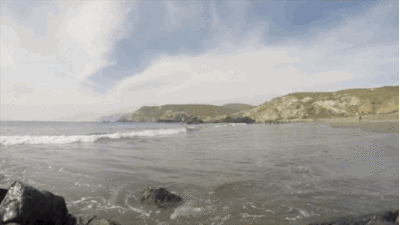
Upwelling is a process that involves cold, nutrient rich water being brought up to the surface. At the equator, upwelling is a regular occurrence due to the combination of the Earth’s rotation and the wind mostly blowing from East to West. This constantly pushes air along the equator and results in water being pushed away from the equator and towards both the Northern and Southern hemispheres. As the surface water is forced outwards from the equator, water from below rises up to take its place. This water is typically cold and full of nutrients.
Upwelling can also occur along coastlines. When wind blows south along the California coast, the friction along the surface of the water combined with the rotation of the Earth cause the surface water to be pushed out away from land. Again, deeper water comes to the surface bringing with it nutrients and cooler water temperatures. In some places, upwelling can even affect the weather. In places such as San Francisco, the cool water temperatures brought by upwelling can cause air temperatures to drop and result in even more dense fog.
The combination of the rotation of the Earth and the friction between the various layers of water, result in overall transportation of water by 90 degrees in a different direction than the wind. In the northern hemisphere, water is moved 90 degrees to the right and in the southern hemisphere the same affect results in water moving to the left. This process is called the Ekman transport.
For more information on the Ekman transport visit: http://oceanmotion.org/html/background/ocean-in-motion.htm



